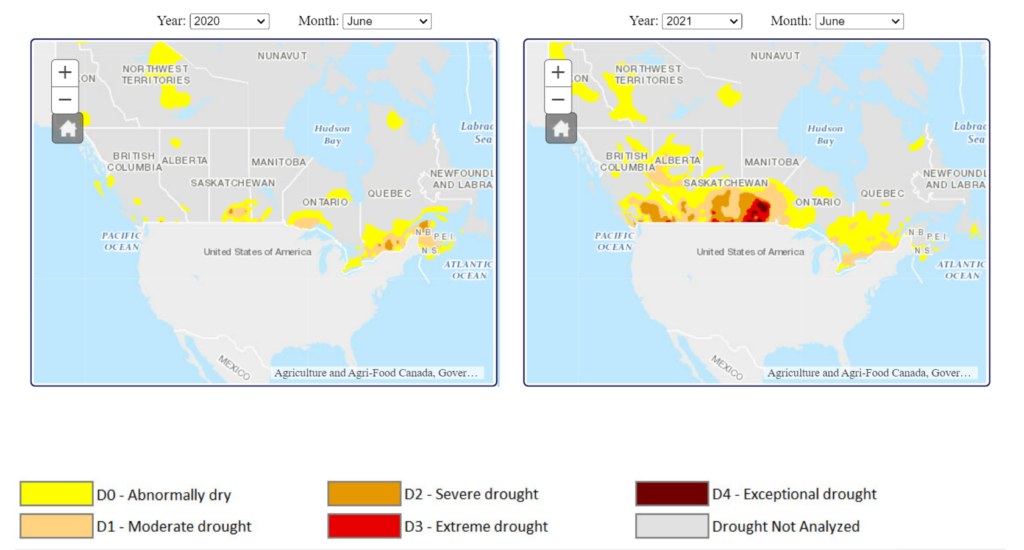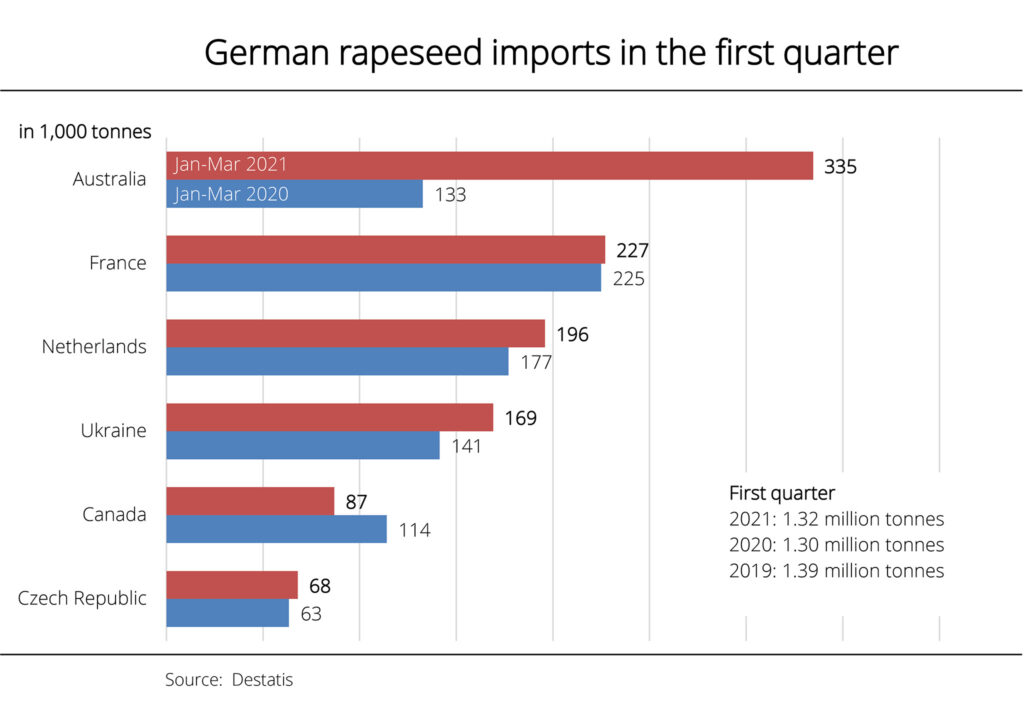Oleochem Analytics – Prospects of tight rapeseed supply in Canada due to dry weather during the first half of the year, has driven up prices in the EU as well as pushed prices of palm oil and soybean oil higher globally.
Palm oil, soybean oil and rapeseed oil can be interchangeably used by HVO producers, making its price change usually affected by each other.
The world’s largest producer and exporter of canola oil has been facing continued high temperatures and drought during the first half of 2021, raising concerns about the canola yields from Canada.
Canola is an edible oilseed developed from rapeseed, primarily grown in the western provinces of Alberta, Saskatchewan and Manitoba in Canada.
These provinces have been marked as D2 or D3 grades by the Canada’s Canadian Drought Monitor, indicating the drought intensity in the region. D2 is given to a drought event occurring every 10 to 20 years, while D3 grade signifies a drought event which occurs once every 20 years or more.

In Winnipeg, the July contract reached a new record high at the equivalent of just less than EUR 661/ton on July 13, according the Union for the Promotion of Oil and Protein Plants (UFOP).
UFOP said an exceptional increase had already been recorded in the days before. The limit-up price and the biggest possible gain in one trading day having been reached and rapeseed prices rose around EUR 100/ton in Canada in a single week.
Development of the Canadian rapeseed plants have been severely affected by the bad weather, likely limiting the yield potential for the 2021/22 marketing year.
In its most recent estimate, the USDA lowered its yield forecast to 22.4 decitons/Ha based on reports from Canada. This level is below the long-term average. The estimate was lowered 0.3% from the previous month to 20.2 million tons.
The scarce supply of Canadian rapeseed will not dampen demand. The EU will need 0.15 million additional tons of rapeseed from abroad because its own supply is inadequate.
UFOP stated in an earlier release that EU-28 rapeseed imports reached a new record high at approximately 6.5 million tons in the 2020/21 marketing year as a result of the significant rise in demand due to EU new biodiesel policies (RED-II).
The continuous rise in demand was initially covered by EU production. Starting in the first half of the marketing year, more rapeseed had to be imported from Canada and later, from Australia to meet demand due to the smaller supply following a reduced harvest in Ukraine.
Imports from Ukraine, European’s largest rapeseed producer, amounted to only around 2.2 million tons in 2020/21, a 24% drop over 2019/20.
However, whereas Canadian rapeseed imports have lost pace since January, imports of Australian rapeseed to the European market have increased. Australia delivered a total of 1.8million tons from February 2021 onwards in Germany, around 335,000 tons only from January to March. This translates to a more than 150% increase over last year’s period, UFOP said.


